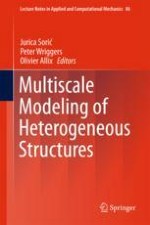2018 | OriginalPaper | Chapter
A Micromorphic Damage-Plasticity Model to Counteract Mesh Dependence in Finite Element Simulations Involving Material Softening
Authors : Tim Brepols, Stephan Wulfinghoff, Stefanie Reese
Published in: Multiscale Modeling of Heterogeneous Structures
Publisher: Springer International Publishing
Activate our intelligent search to find suitable subject content or patents.
Select sections of text to find matching patents with Artificial Intelligence. powered by
Select sections of text to find additional relevant content using AI-assisted search. powered by
